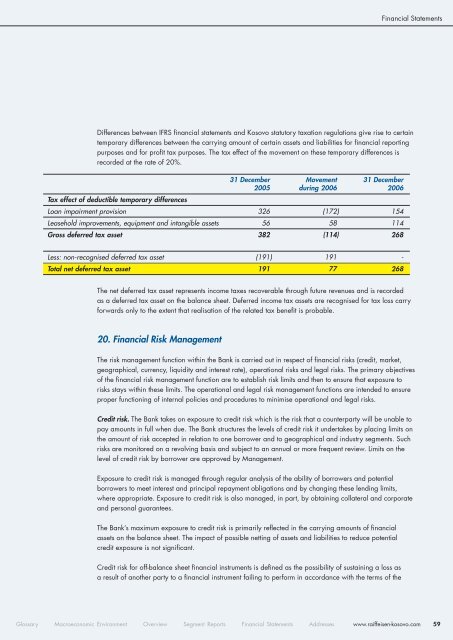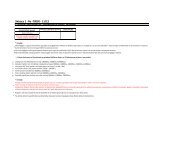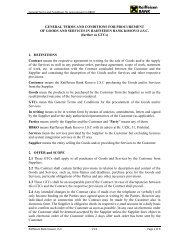Annual Report - Raiffeisen Bank Kosovo JSC
Annual Report - Raiffeisen Bank Kosovo JSC
Annual Report - Raiffeisen Bank Kosovo JSC
Create successful ePaper yourself
Turn your PDF publications into a flip-book with our unique Google optimized e-Paper software.
Financial Statements<br />
Differences between IFRS financial statements and <strong>Kosovo</strong> statutory taxation regulations give rise to certain<br />
temporary differences between the carrying amount of certain assets and liabilities for financial reporting<br />
purposes and for profit tax purposes. The tax effect of the movement on these temporary differences is<br />
recorded at the rate of 20%.<br />
Tax effect of deductible temporary differences<br />
31 December Movement 31 December<br />
2005 during 2006 2006<br />
Loan impairment provision 326 (172) 154<br />
Leasehold improvements, equipment and intangible assets 56 58 114<br />
Gross deferred tax asset 382 (114) 268<br />
Less: non-recognised deferred tax asset (191) 191 -<br />
Total net deferred tax asset 191 77 268<br />
The net deferred tax asset represents income taxes recoverable through future revenues and is recorded<br />
as a deferred tax asset on the balance sheet. Deferred income tax assets are recognised for tax loss carry<br />
forwards only to the extent that realisation of the related tax benefit is probable.<br />
20. Financial Risk Management<br />
The risk management function within the <strong>Bank</strong> is carried out in respect of financial risks (credit, market,<br />
geographical, currency, liquidity and interest rate), operational risks and legal risks. The primary objectives<br />
of the financial risk management function are to establish risk limits and then to ensure that exposure to<br />
risks stays within these limits. The operational and legal risk management functions are intended to ensure<br />
proper functioning of internal policies and procedures to minimise operational and legal risks.<br />
Credit risk. The <strong>Bank</strong> takes on exposure to credit risk which is the risk that a counterparty will be unable to<br />
pay amounts in full when due. The <strong>Bank</strong> structures the levels of credit risk it undertakes by placing limits on<br />
the amount of risk accepted in relation to one borrower and to geographical and industry segments. Such<br />
risks are monitored on a revolving basis and subject to an annual or more frequent review. Limits on the<br />
level of credit risk by borrower are approved by Management.<br />
Exposure to credit risk is managed through regular analysis of the ability of borrowers and potential<br />
borrowers to meet interest and principal repayment obligations and by changing these lending limits,<br />
where appropriate. Exposure to credit risk is also managed, in part, by obtaining collateral and corporate<br />
and personal guarantees.<br />
The <strong>Bank</strong>’s maximum exposure to credit risk is primarily reflected in the carrying amounts of financial<br />
assets on the balance sheet. The impact of possible netting of assets and liabilities to reduce potential<br />
credit exposure is not significant.<br />
Credit risk for off-balance sheet financial instruments is defined as the possibility of sustaining a loss as<br />
a result of another party to a financial instrument failing to perform in accordance with the terms of the<br />
Glossary Macroeconomic Environment Overview Segment <strong>Report</strong>s Financial Statements Addresses<br />
www.raiffeisen-kosovo.com<br />
59

















